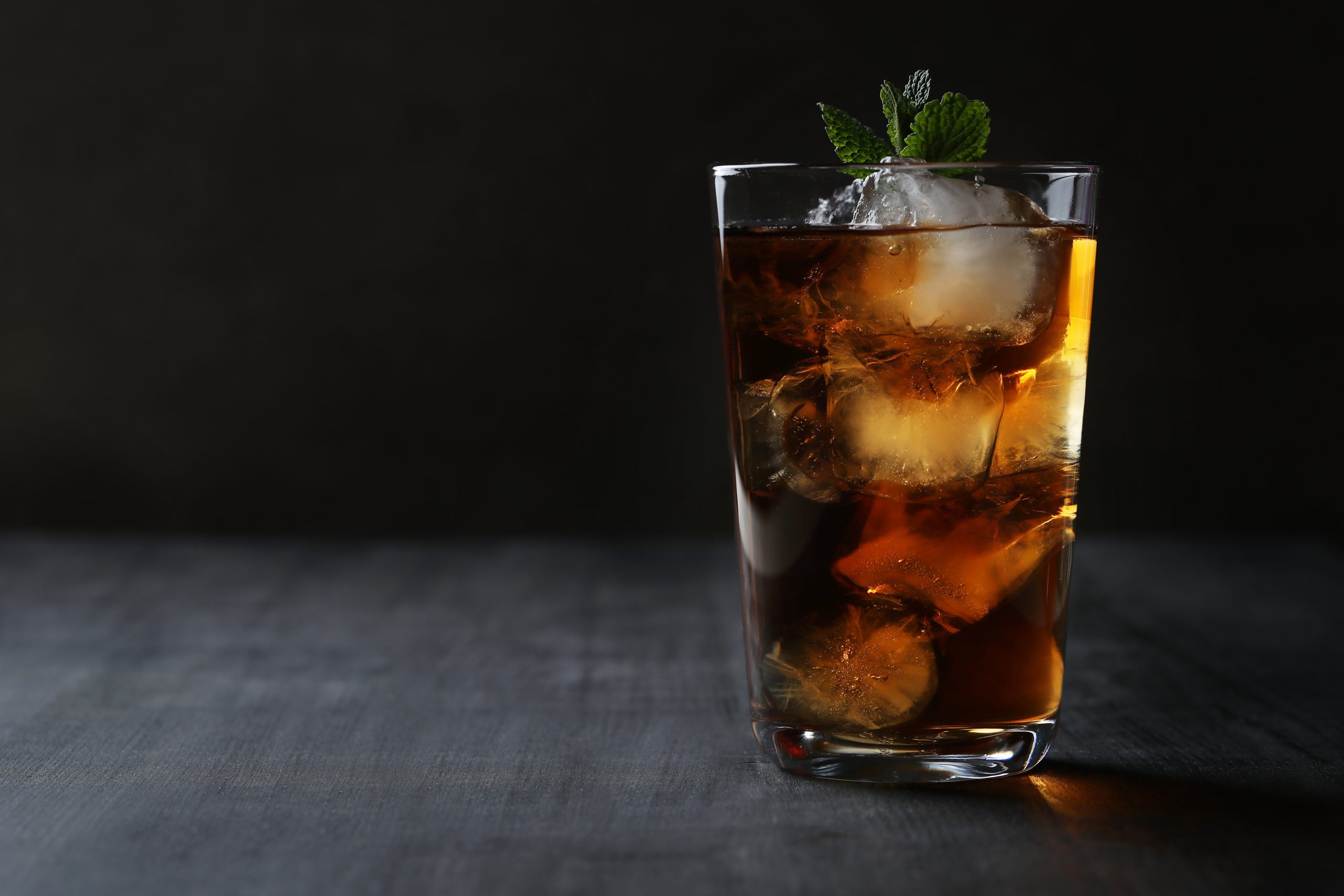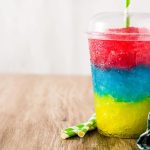A hot summer day is not complete without a cold glass of iced tea. While this drink is enjoyed by many, few know that it can be classified as either homogeneous or heterogeneous. So, which is it? Keep reading to find out!

Contents
- 1 What Is Homogeneous Or Heterogeneous?
- 2 Example Of Homogeneous Mixture
- 3 Example Of Heterogeneous Mixture
- 4 Is Iced Tea A Mixture?
- 5 Is Iced Tea Homogeneous Or Heterogeneous?
- 6 Is Coffee A Homogeneous Or Heterogeneous Mixture?
- 7 Is Milk Heterogeneous Or Homogeneous?
- 8 Is Chocolate Sundae Heterogeneous Or Homogeneous?
- 9 Final Thoughts
What Is Homogeneous Or Heterogeneous?
Before we can determine whether iced tea is homogeneous or heterogeneous, we need to understand what these terms mean.
Homogeneous
Homogeneous is a term used in mathematics and physical sciences to describe a substance or a state of matter that is uniform in composition throughout. In other words, it has the same properties and composition at all points. This can be achieved through either chemical or physical means. When a material is said to be homogeneous, this also means that it is isotropic. This is a term used in physics to describe a material or state of matter that has the same physical properties in all directions.
Most substances found in nature are not homogeneous, but are instead heterogeneous. This means that they have different properties and compositions at different points. Heterogeneous materials can be broken down into smaller pieces, each of which will have its own unique characteristics. Homogeneous materials, on the other hand, cannot be easily broken down into smaller pieces without changing their essential nature. This is one of the reasons why homogeneous materials are often preferred in industrial applications.
There are a number of ways to produce a homogeneous material. One way is to dissolve the material in a solvent. By doing this, all of the individual particles will be evenly distributed throughout the solvent. Another way to produce a homogeneous material is to heat it until it reaches a uniform state. This can be done by heating the material until it reaches its melting point, or by boiling it until all of the liquid has evaporated. Finally, a material can be made homogeneous through mechanical means, such as grinding or milling. By doing this, all of the individual particles will be reduced in size and will have a more uniform composition.
Heterogeneous
A heterogeneous mixture is a mixture of two or more substances that are not the same. This type of mixture is often found in solids, liquids, and gases. When two substances are mixed together, their atoms and molecules are still able to be distinguished from each other. The different properties of the substances will affect how the mixture behaves.
A heterogeneous mixture can be physically separated into its individual substances by using a physical method like filtration. The different substances in the mixture will have different densities, which means they will settle at different levels in a container of liquid. For example, if you have a mixture of sand and water, the sand will sink to the bottom while the water will stay on top.
Heterogeneous mixtures are also often separated chemically. If two substances are mixed together and one is more reactive than the other, it will eventually break down and the components will separate. For example, if you mix salt (an ionic compound) with sugar (a covalent compound), the salt will dissolve in the water because it is more reactive. The sugar will not dissolve because it is less reactive. Once the salt has dissolved, the water will be a heterogeneous mixture of salt and water molecules.
Example Of Homogeneous Mixture
A homogeneous mixture is a substance made up of two or more substances that are evenly mixed together. Unlike a heterogeneous mixture, which is composed of two or more substances that are not evenly mixed, a homogeneous mixture has a uniform composition. This means that the different substances in the mixture are evenly distributed throughout the entire substance.
Is Water A Homogeneous Mixture?
One example of a homogeneous mixture is Water. Water is made up of hydrogen and oxygen, which are evenly mixed together. If you were to take a sample of water and break it down into its individual components, you would find that the concentration of hydrogen and oxygen in each part of the water would be exactly the same.
Air Is What Type Of Mixture?
Another example of a homogeneous mixture is Air. Air is made up of nitrogen, oxygen, and other gases, which are evenly mixed together. If you were to take a sample of air and break it down into its individual components, you would find that the concentration of nitrogen, oxygen, and other gases in each part of the air would be exactly the same.
How Is Milk A Homogeneous Mixture?
Although homogeneous mixtures are uniform in composition, this does not mean that they are always stable. In some cases, the different substances in a homogeneous mixture can separate out over time. When this happens, the mixture becomes heterogeneous. An example of a homogeneous mixture that separates out over time is milk. Milk is made up of water, fat, protein, and lactose. The water and fat are evenly mixed together, but the protein and lactose are not. As milk sits on the shelf, the protein and lactose will slowly separate out from the water and fat. This is why milk that has been sitting on the shelf for a while will have a thick layer of cream on top.
Example Of Heterogeneous Mixture
Heterogeneous mixtures are found all around us in nature and in everyday life. Some common examples include:
- Homemade ice cream: Ice cream is made by mixing milk, cream, sugar, and flavorings together. The different substances in the mixture will form clumps (fat droplets) that give the ice cream its characteristic texture.
- A glass of orange juice: Orange juice is made by mixing orange juice concentrate with water. The orange juice concentrate is a heterogeneous mixture of oranges, sugar, and water. When it is mixed with water, the different substances will separate and you will get a glass of orange juice that is a heterogeneous mixture of orange juice, sugar water, and water molecules.
- A cup of coffee: Coffee is made by mixing roasted coffee beans with hot water. The different substances in the mixture will extract different flavors from the coffee beans. The coffee beans are a heterogeneous mixture of caffeine, oils, and proteins. When they are mixed with hot water, the different substances will dissolve and you will get a cup of coffee that is a heterogeneous mixture of dissolved caffeine, oils, and proteins.
Is Iced Tea A Mixture?
Iced tea is a popular drink that can be enjoyed cold or hot. It is made from brewed tea leaves and water, and typically has sugar and lemon added for flavor. Iced tea is a refreshing beverage that can be enjoyed at any time of day. Some people believe that iced tea can help them stay hydrated, while others enjoy the taste. Whether you’re looking for a healthy drink or a tasty one, iced tea is definitely worth considering.
When substances dissolve and form a homogeneous mixture, the mixture is called a solution. Whatever substance there is more of is called the solvent. The other is called the solute. In our case; Iced tea – the solvent is the water, the solute is the tea mix.
Is Iced Tea Homogeneous Or Heterogeneous?
Ice Tea can be thought of as either a homogeneous mixture or a homogeneous mixture. As you may recall, a homogeneous mixture has the same properties throughout if there is no region with different properties from the rest of the mixture. However, in the case of a heterogeneous mixture, we may have areas that are uniquely different from the rest of the solution or mixture, with unique properties. So if we had ice tea without ice cubes, it would be homogeneous. However, if we put ice cubes in it, we get different regions. We have the liquid iced tea first, followed by the solidified water.
The solidified water will have different properties than the liquid iced tea, so the ice tea with ice cubes, as a whole, would be referred to as a heterogeneous mixture. When the ice melts, will this change? Without a doubt, The water will be evenly distributed throughout the ice tea and ice when the ice melts. Tea without ice cubes would be a heterogeneous mixture.
Is Coffee A Homogeneous Or Heterogeneous Mixture?
Coffee is a heterogeneous mixture because it has two different types of substances in it, water and coffee grounds. The water and coffee grounds are not evenly mixed together, so coffee can be thought of as a mixture of two different substances. When you drink coffee, you are drinking a heterogeneous mixture.
Is Milk Heterogeneous Or Homogeneous?
Milk is a heterogeneous mixture because it has two different types of substances in it, water and milk fat. The water and milk fat are not evenly mixed together, so milk can be thought of as a mixture of two different substances. When you drink milk, you are drinking a heterogeneous mixture.
Is Chocolate Sundae Heterogeneous Or Homogeneous?
A chocolate sundae is a heterogeneous mixture because it has two different types of substances in it, water and ice cream. The water and ice cream are not evenly mixed together, so a chocolate sundae can be thought of as a mixture of two different substances. When you eat a chocolate sundae, you are eating a heterogeneous mixture.
Final Thoughts
Iced tea can be classified as either homogeneous or heterogeneous.
Homogeneous substances are uniform in composition, while heterogeneous substances have different parts that are not uniformly mixed.
Iced tea is a heterogeneous substance because it has both ice and tea particles. The difference between these two types of substances is important for those who want to understand how to make perfect iced tea every time. Heterogeneous mixtures often require shaking before serving in order to mix the particles together.
In conclusion, when making iced tea, remember that it is a heterogenous mixture and give it a good shake before serving!










Add Comment